White patterns can appear over any coat colour. They can range from just a few white hairs on the body to almost completely covering the colour determined by base colour, modifiers, and dilutions. The skin underneath the white areas is normally pink. The edges of the patterns can be rounded, defined, irregular or include white ticking or “roaning”. There are many different genes and alleles that can cause white patterns, each having its own characteristics.
¶ Frame Overo
Frame overo can be characterised by white patches on the body and head with a horizontal orientation. The white areas typically don't cross over the back and the legs of the horse, making it seem like the white is “framed” by colour when looking at the horse from the side. The edges of the white patches are defined, sharp and have a more jagged shape. Horses with frame overo commonly have a blaze that is wider on the forehead. A coloured upper lip on an otherwise very white head is also possible. They may have 1 or 2 blue eyes.
The pattern is extremely variable in expression. Horses may have no white at all, or just a single blue eye, making it hard or impossible to identify the white pattern without genetic testing. Minimal expressions may lead to head markings without any white patches on the body. Horses with a louder expression may have some white patches on their belly and/or neck. The white patches may also cover almost the entire side of the horse, all the way from the neck to the hindquarters.
The frame overo (OLW) allele is incomplete dominant, but lethal when homozygous, resulting in the Overo Lethal White Syndrome (OLWS). Horses with one copy of OLW are completely healthy, but foals born with 2 copies of OLW (OLW/OLW) have an underdeveloped intestinal tract. This leads to death within a couple of days. There is no cure for OLWS, and foals born with the syndrome will therefore be humanely euthanised right after birth. In-game, you will receive a notification when a foal is born with OLWS, which mentions that the foal had to be humanely put to sleep. When 2 horses that both have a copy of OLW are bred together, there is a 25% chance that the foal will be OLW/OLW.
| Frame Overo - Quarter Horse | ||

|

|
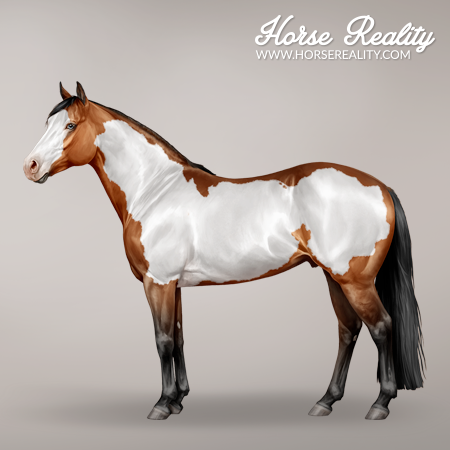
|
Below, the resulting phenotype of each genotype is listed:
- OLW/OLW = Lethal (fully “white”)
- OLW/n = Frame overo
- n/n = Not frame overo
Frame overo can be tested at the Laboratory.
¶ Leopard Complex
Leopard complex is a group of related white patterns. The most important characteristics are mottled skin, stripped hooves and white sclera. There are many different leopard complex patterns that show white patches, with or without pigmented spots known as leopard spots, and “roaning” (progressive loss of pigment with age). Even though they are present in several different breeds, the patterns are also often called "appaloosa" or “appaloosa spotting".
The LP-allele of the leopard complex gene, is the core of all leopard spotting patterns. Without any copies of LP, a horse won't have a leopard complex pattern. It is incomplete dominant; horses that are homozygous (LP/LP) will have little to no leopard spots, while horses that are heterozygous (LP/lp) normally do have leopard spots.
Leopard complex can be tested at the Laboratory. There, it is named “appaloosa”.
Horses that are homozygous and heterozygous for the LP-allele will both vary in the amount of white area that is present as this is controlled by different genes. These genes are called modifier genes. In-game, the pattern-1 (PATN1) and hidden pattern-2 (PATN2) modifiers are present. The 3 genes work together to create a wide variety of patterns. The exact genetics causing the patterns are not yet fully understood in real life.
Pattern-1 can be tested at the Laboratory. Pattern-2 is not a testable gene in real life but has been implemented in the game as a way to account for the unknown genetic causes of certain patterns.
| Leopard Complex - Knabstrupper | ||

|
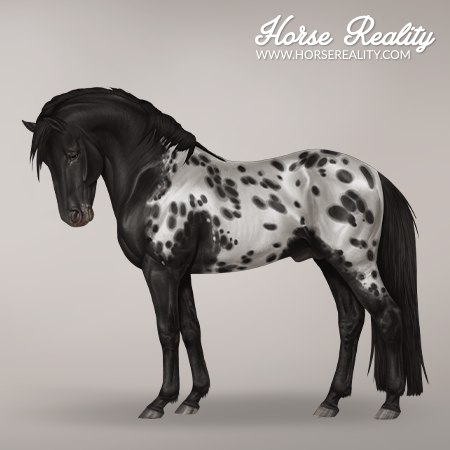
|
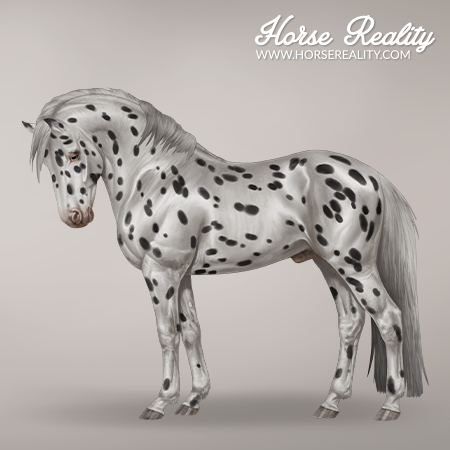
|
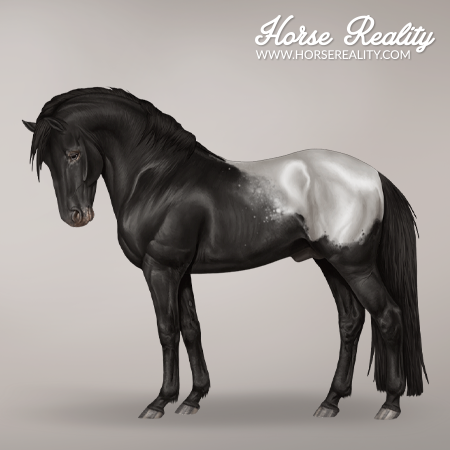
|
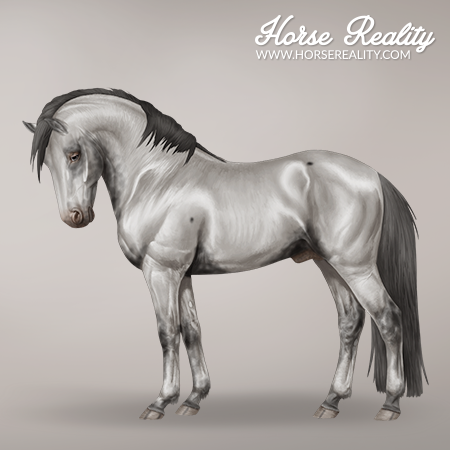
|
|
The table below lists the resulting phenotype of each genotype. Pattern-2 has not been included, since it is a hidden gene.
| Leopard Complex (LP) | Pattern-1 | Phenotype |
| LP/_ | patn1/patn1 | Varnish Roan |
| LP/lp | PATN1/patn1 | Spotted Blanket / Near Leopard |
| LP/lp | PATN1/PATN1 | Leopard |
| LP/LP | patn1/patn1 | Varnish Roan |
| LP/LP | PATN1/patn1 | Snowcap |
| LP/LP | PATN1/PATN1 | Fewspot |
¶ Splashed White 1
Splashed white 1 is one of several splashed white patterns that exist in real life, but only splashed white 1 has currently been implemented in the game. It is characterised by large face markings, white markings on the legs, belly patches, and blue eyes; giving the appearance of a horse that has been dipped into a bucket of white paint. The edges between white and coloured areas are sharp. The expression of splashed white can vary from very minimal to extensive amounts of white.
The SW1-allele that causes splashed white 1 is incomplete dominant. Homozygous splashed white 1 (SW1/SW1) creates more white than heterozygous splashed white.
| Splashed white 1 - Quarter Horse | ||
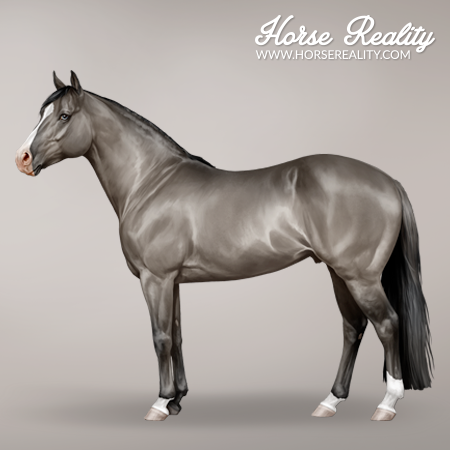
|

|

|
The resulting phenotype of each genotype is listed below:
- SW1/SW1 = Splashed white 1
- SW1/n = Splashed white 1
- n/n = Not splashed white 1
Splashed white 1 can be tested at the Laboratory.
¶ Tobiano
The tobiano white pattern, also referred to as piebald (black and white) or skewbald (other colours and white) in the UK, causes white legs below the hocks and knees. In minimally expressed tobianos, this can be the only white they have. Tobiano horses can also be characterised by white, rounded patches on the coat that typically cross the topline (back) of the horse somewhere between the ears and tail. It generally doesn't create markings on the head.
Tobiano is caused by a chromosome inversion very close to the KIT locus and is therefore usually treated as being part of KIT. The tobiano allele (TO) is dominant. There may be some visual differences between horses that are heterozygous (TO/n) or homozygous (TO/TO) for tobiano; small, coloured spots within the white patches called paw prints, ink spots, or cat tracks are typical for horses homozygous for tobiano, but exceptions are possible.
| Tobiano - Irish Cob Horse | ||

|
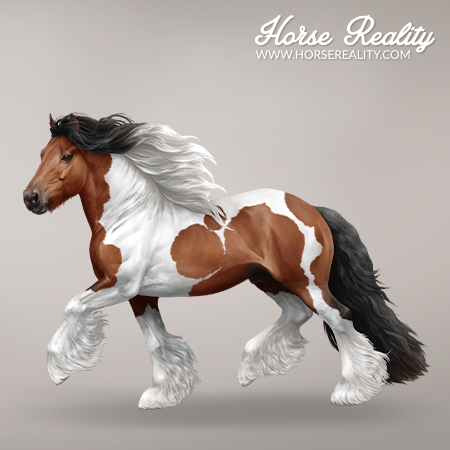
|
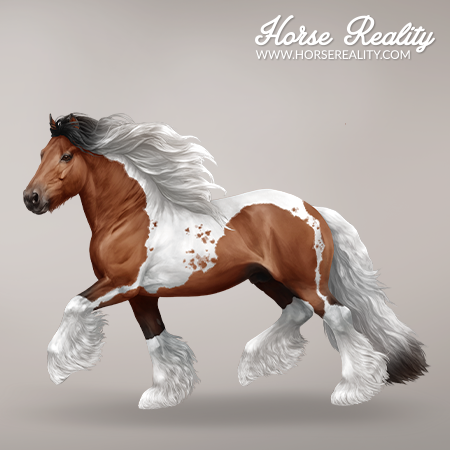
|
Below, the resulting phenotype of each genotype is listed:
- TO/TO = Tobiano
- TO/n = Tobiano
- n/n = Not tobiano
Tobiano can be tested at the Laboratory.
¶ Sabino1
Sabino1 can be characterised by white markings on the legs, often accompanied by white patches, typically with irregular and jagged edges, on a horse's belly, face and/or entire body. White ticking on a body is also very common. There is a high variability of expression: it can be very minimal and difficult to distinguish from regular white markings, or even cause the horse to look almost entirely “white”.
Sabino1 is caused by the incomplete dominant SB1-allele, located on the KIT gene. Horses heterozygous for SB1 have less white than horses that are homozygous, who often look nearly “white”.
| Sabino1 - Irish Cob Horse | |

|
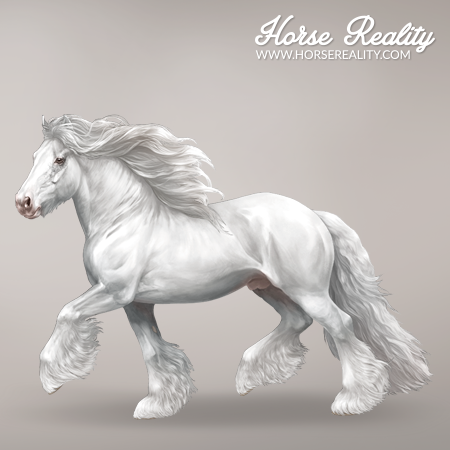
|
Below, the resulting phenotype of each genotype is listed:
- SB1/SB1 = Sabino1
- SB1/n = Sabino1
- n/n = Not sabino1
Sabino1 can be tested at the Laboratory.
¶ Roan
Roan is characterised by white hairs mixed into the rest of the coat except for the head, lower legs, manes, and tail, which usually stay entirely coloured. Foals are born with the coat colour determined by their genes, without white hairs. In Horse Reality, horses will show a roan coat once they turn into an adult (3 years old).
Roan is caused by the dominant RN-allele which has been assigned to the KIT locus. Homozygous (RN/RN) and heterozygous roans (RN/n) are identical in appearance.
| Roan - Various breeds | |

|

|
Below, the resulting phenotype of each genotype is listed:
- RN/RN = Roan
- RN/n = Roan
- n/n = Not roan
Roan can be tested at the Laboratory.
¶ White Spotting
White spotting is a general name given to a large group of related white patterns. Currently, 34 different variations have been discovered in real life. At the moment, only W3, W10, W19, W20 and W21 have been implemented in-game. These can be tested at the Laboratory.
There is a large variability in the type of pattern and amount of white caused by each of the different variations. The expression may vary from leg and face markings with or without white patches on the belly, to even a nearly “white” phenotype. The white markings and patches often have irregular, jagged edges. White ticking on the body is also quite common.
| White spotting - Various breeds | |

|
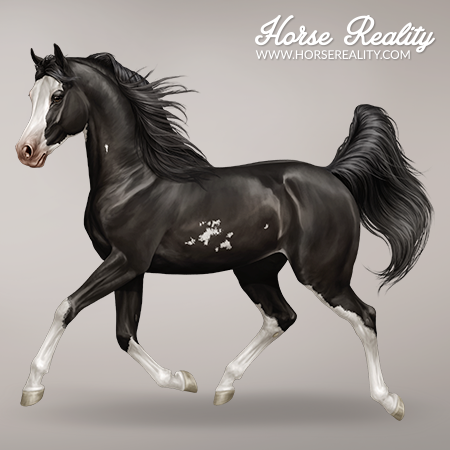
|
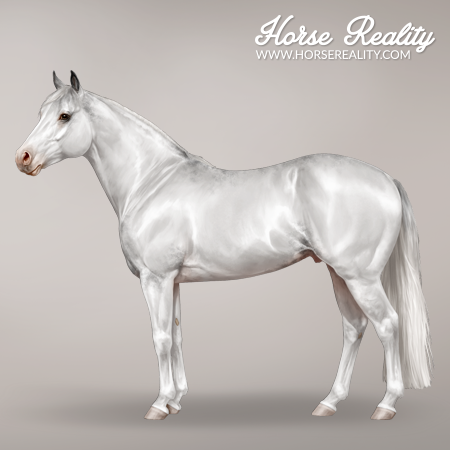
|
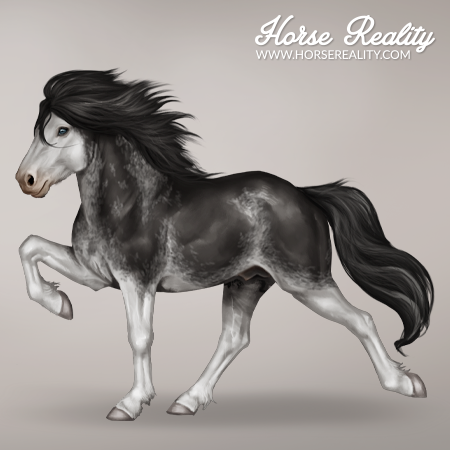
|
Only homozygous W20 (W20/W20) is viable. Breeding two horses together that both have any of the other white spotting alleles (W/n), will result in a failed pregnancy on the 4th day if the foal is W/W (25% chance). By now there is proof that certain white spotting combinations are viable when homozygous, but this was not yet known at the time of game code implementation. Both the failed pregnancy as a result of homozygous white spotting and the regular miscarriage result in the same in-game notification.
¶ Rabicano
Rabicano can be characterised by its very typical white ticking pattern. Rabicano horses have white hairs at the base of their tail, which is often called a coon or skunk tail. There are often white horizontal stripes or rings near the tail base, and the top of the tail itself may have white hairs mixed into it. Rabicano also causes white ticking concentrated around the flank area. It may spread out from there, to the rest of the body. The white ticking typically aligns itself in a vertical striping pattern on the sides of the horses. The expression of rabicano can vary strongly between horses. Some horses may only have a couple of white hairs in their tails, while other horses may have white ticking that covers almost their entire body.
In Horse Reality, rabicano is caused by the recessive rab-allele of the hidden rabicano gene.
| Rabicano - Arabian Horse | |
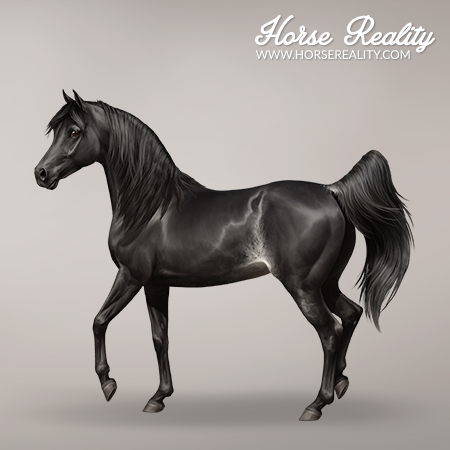
|

|

|

|
Below, the resulting phenotype of each genotype is listed:
- rab/rab = Rabicano
- rab/n = Not rabicano
- n/n = Not rabicano
¶ Hidden Sabino
In Horse Reality, Hidden sabino is the name for sabino1 or white spotting-like patterns, for which the genetic cause hasn't been found yet. The expression of hidden sabino may vary between breeds since it covers several untestable patterns in different breeds. The pattern can be very minimal and hard to distinguish from regular white markings or cause very extensive white. Typical characteristics are (leg) markings that have irregular edges, belly spots, white ticking on the body, and face markings that go over the lower lip and/or jaw of the horse.
Hidden sabino has been implemented as the same hidden gene for all horse breeds. The allele of this gene that is responsible for the hidden sabino phenotype is recessive. However, the expression of hidden sabino is also affected by the presence of other genes. This may cause some horses with hidden sabino to have very little white, while others have a very expressive pattern.
| Hidden sabino - Arabian Horse | |
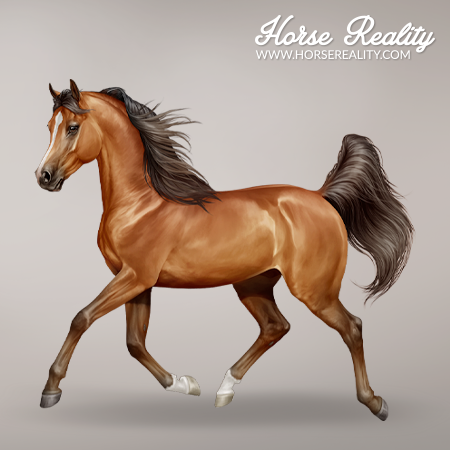
|
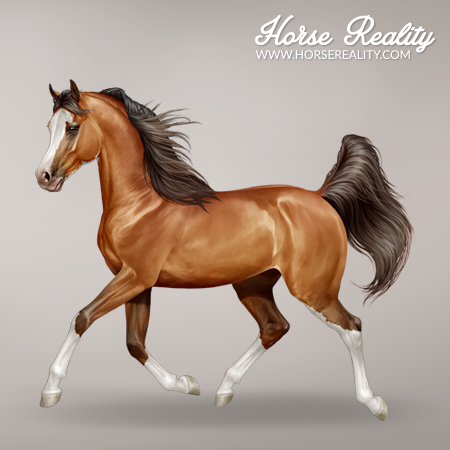
|
¶ White Markings
White markings are white areas of hair on the face, legs and/or body of the horse, not caused by any of the currently identified white patterns.
| White markings - Akhal-Teke Horse | |

|
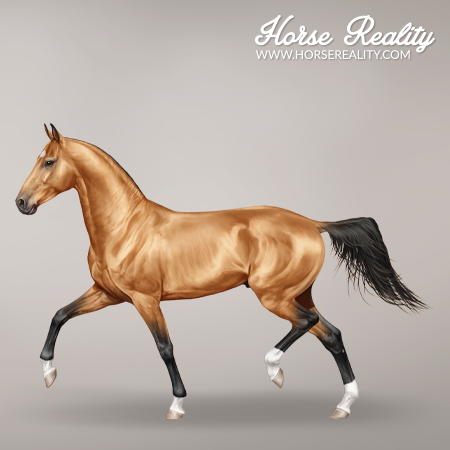
|
In-game, white markings are caused by the alleles of the hidden WM gene. Which combination of WM-alleles a horse has, will determine the amount or size of their white markings; for example, whether they only have one small sock or high stockings on all four legs. Certain combinations of WM-alleles may also affect the expression of other white patterns.
¶ References
- Bellone R., Sponenberg D. P., Equine Color Genetics, 4th Edition, 2017, Wiley-Blackwell
- Bowling A., Ruvinsky A., 2000, The Genetics of the Horse, 2000
- UC Davis Veterinary Genetics Laboratory; https://vgl.ucdavis.edu/; Access: December 2022
- Generatio Center for Animal Genetics; https://generatio.de/en/services/dna-tests-horses; Access: December 2022
- The University of Sydney, Online Medelian Inheritance in Animals (OMIA); https://omia.org/OMIA000209/9796/; Access: December 2022